Dogs know a liar when they see one—and they don’t need words to prove it.
Long before you start second-guessing a new guest or side-eyeing a shady neighbor, your dog may already be sending up red flags with their tail, ears, or teeth.
We’re talking about the subtle growls, the sudden avoidance, the stiff body language that screams, “This one’s bad news.”
And let’s be honest—how many times have you brushed it off, only to later realize your dog was right all along?
These behaviors aren’t just quirks. They’re centuries of instincts sharpened to sniff out danger, dishonesty, and bad vibes you never saw coming.
If your pup suddenly turns cold toward someone? Don’t ignore it. There might be more behind that bark than you think.
Let’s unpack the strange, fascinating signs your dog flashes when their internal alarm goes off—and why you should trust it.
Unusual Staring
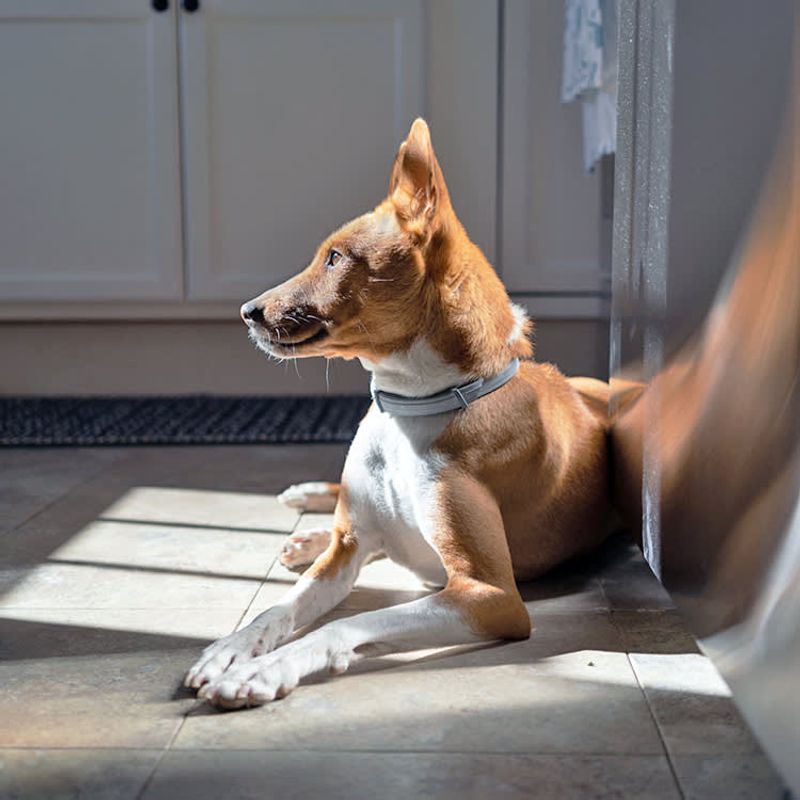
With eyes locked in unwavering attention, dogs may fixate their gaze on someone they distrust. This behavior often indicates deep contemplation or unease, as they try to understand the person’s intentions.
Their eyes, windows into their thoughts, can reveal a world of emotions. It’s a profound moment when their steady, penetrating stare meets the eyes of a human.
For a dog, this behavior serves as a silent inquiry, a non-verbal question posed to the person in question, seeking to unravel the mystery of trustworthiness.
Sudden Barking

In an explosion of sound, a dog’s sudden barking can catch everyone off guard. This abrupt vocalization often reflects an acute sense of danger or mistrust toward someone nearby.
It’s like an alarm going off, a clear signal that says, “I don’t trust you.” Each bark is filled with urgency and determination.
In the midst of a peaceful setting, this behavior stands out undeniably, highlighting the dog’s role as a vigilant guardian, always on the lookout for potential threats to its loved ones.
Tail Tucking
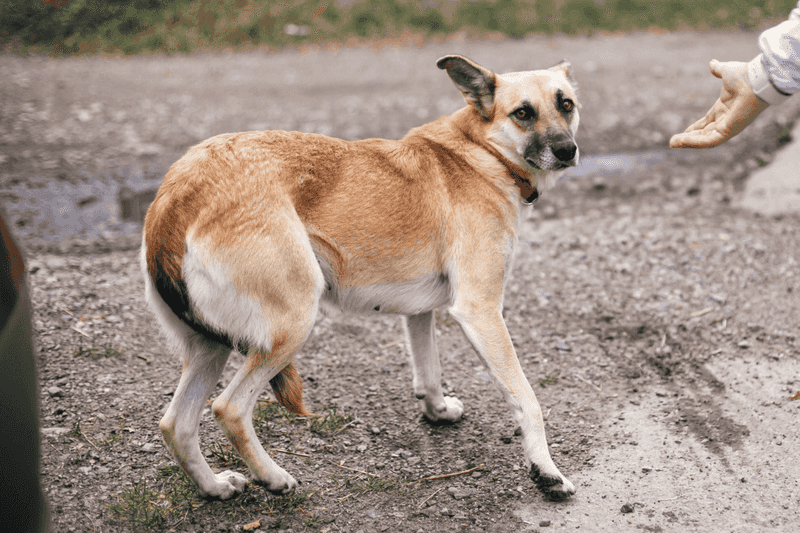
A dog’s tail, often a barometer of their emotions, reveals much when it tucks tightly between its legs. This posture suggests fear or anxiety, signaling that the dog senses something amiss.
The tucked tail is a protective gesture, a way to shield themselves from perceived harm. It tells a story of vulnerability and caution.
In the presence of someone they deem untrustworthy, this behavior serves as a clear indicator of their instinctual response to doubt and suspicion.
Avoidant Behavior
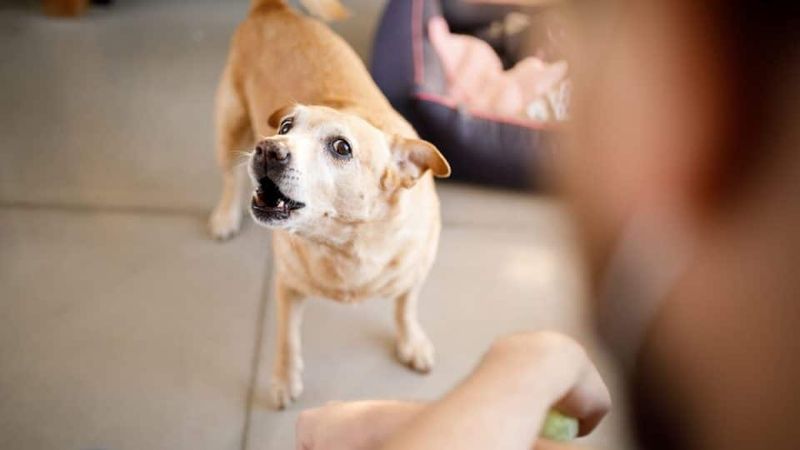
When a dog turns away, refusing to meet someone’s gaze, it speaks volumes. Avoidant behavior often suggests discomfort or distrust, a subtle yet powerful non-verbal cue.
It’s as if the dog is saying, “I can’t bear to look at you,” expressing their inner reluctance through silence.
This behavior can manifest in settings where things seem calm, yet the dog’s instincts reveal another layer of understanding, hinting at their inner sense of caution and skepticism.
Raised Hackles
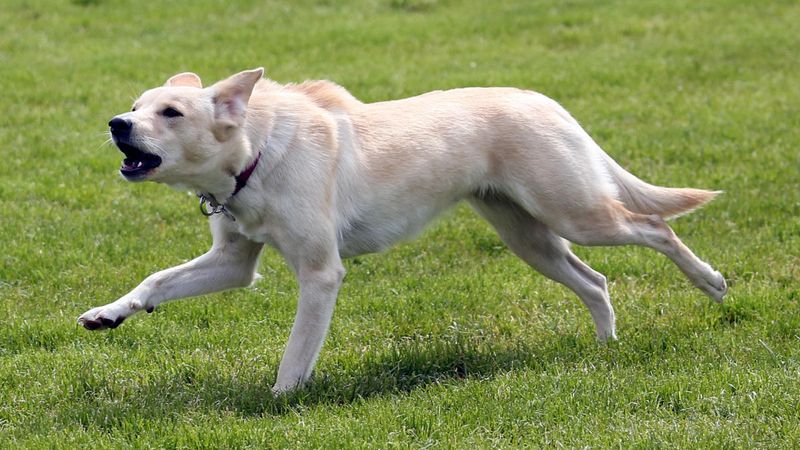
Like a living alarm system, raised hackles on a dog’s back signal heightened alertness and readiness. It’s a response rooted in primal instincts, often triggered by suspicion.
This behavior is akin to a cat’s arched back, a display of both fear and readiness to act. The dog’s body language is a complex dance of emotions.
In the presence of someone they don’t trust, raised hackles become a physical manifestation of their sense of wariness and protective nature.
Growling Softly
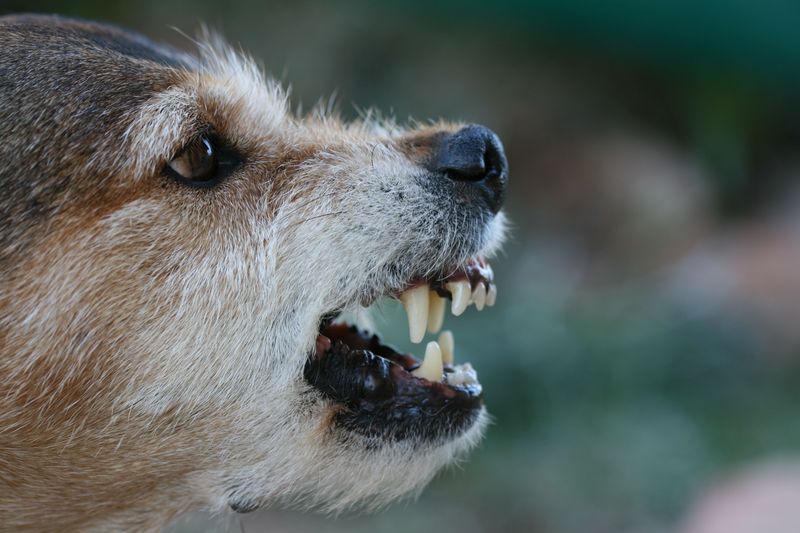
A low, rumbling growl can send a shiver down one’s spine. Dogs exhibit this behavior when they sense something is not quite right. It’s a warning sign, a vocal expression of discontent.
The growl carries weight, a message wrapped in sound, telling the person to tread carefully. It’s an auditory beacon of the dog’s inner turmoil.
In those moments, the growl becomes a bridge between instinct and expression, revealing the dog’s skepticism about a person’s trustworthiness.
Licking Lips Excessively
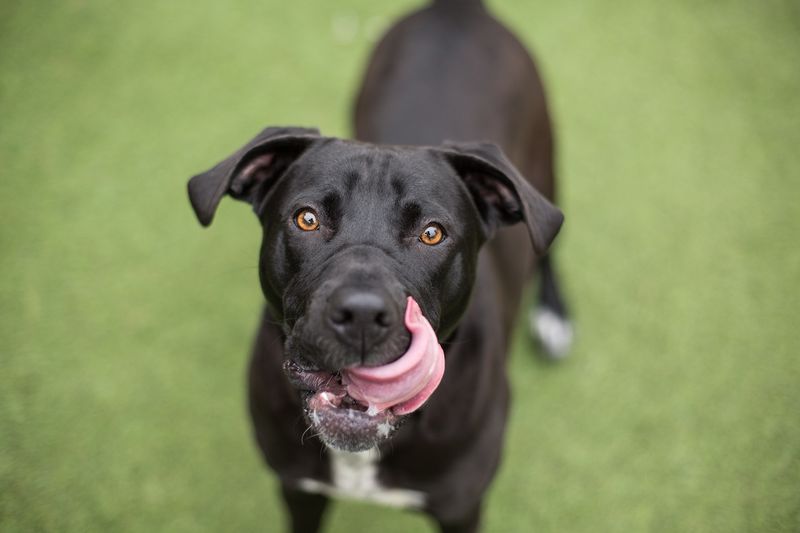
When a dog repeatedly licks its lips, it may not be due to hunger. This behavior often indicates nervousness or uncertainty when they sense someone is untrustworthy.
It’s a way for the dog to self-soothe, to cope with inner tension. Each lick is like a whispered thought, trying to calm their racing mind.
In bustling environments, this subtle gesture can easily go unnoticed, yet it speaks volumes about the dog’s perception of the people around them.
Hiding Behind Owner
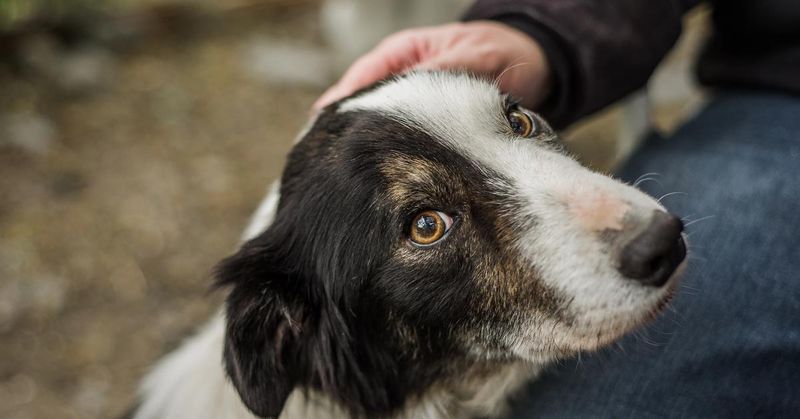
In moments of doubt, a dog may choose the safety of its owner’s presence, hiding behind them for protection. This behavior underscores their insecurities.
It’s a silent request for reassurance, a physical manifestation of their vulnerability. Behind their owner’s legs, they find a fortress of comfort.
This action highlights the dog’s reliance on their human companion to shield them from perceived threats, showcasing their deep trust in their owner’s judgment.
Refusing Treats
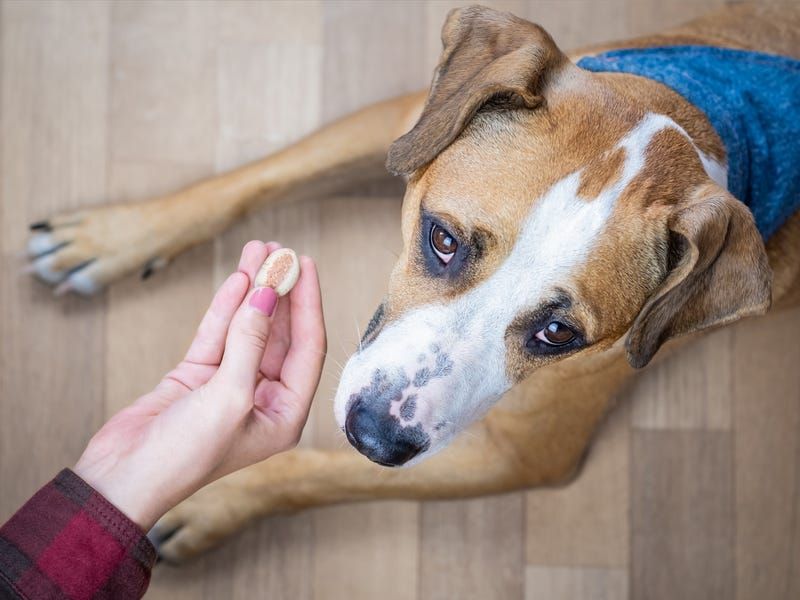
A treat-passing moment turns into a surprising refusal when a dog senses something is off. Despite the allure of a tasty morsel, their instincts override temptation.
This behavior speaks to a deeper intuition, a gut feeling that something is not right. The refusal acts as a testament to their perception.
In a world where treats are typically irresistible, this action stands out, highlighting the dog’s ability to prioritize their safety over momentary pleasures.
Yawning Frequently
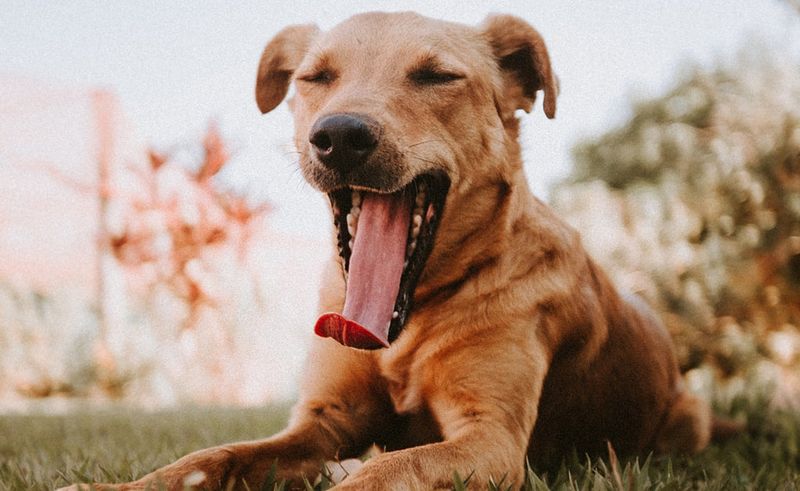
Frequent yawning in dogs doesn’t always indicate tiredness. It’s often a sign of stress or discomfort, especially when they sense someone is untrustworthy.
This behavior serves as a physical manifestation of their unease, a way to release built-up tension. Each yawn is a silent expression of their inner state.
In familiar surroundings, this gesture can appear normal, yet it subtly communicates the dog’s perception of their environment and those within it.
Pacing Anxiously

Pacing is a telltale sign of anxiety in dogs, arising when they sense something unsettling. This restless movement reflects their inner turmoil, a physical echo of their mental state.
It’s as if they’re trying to walk away from their doubts, yet unable to escape the feeling. The movement is continuous, like an unanswered question.
In a serene setting, this behavior becomes a vivid indicator of the dog’s perception of unease, a moving testament to their instincts.
Drooling Excessively
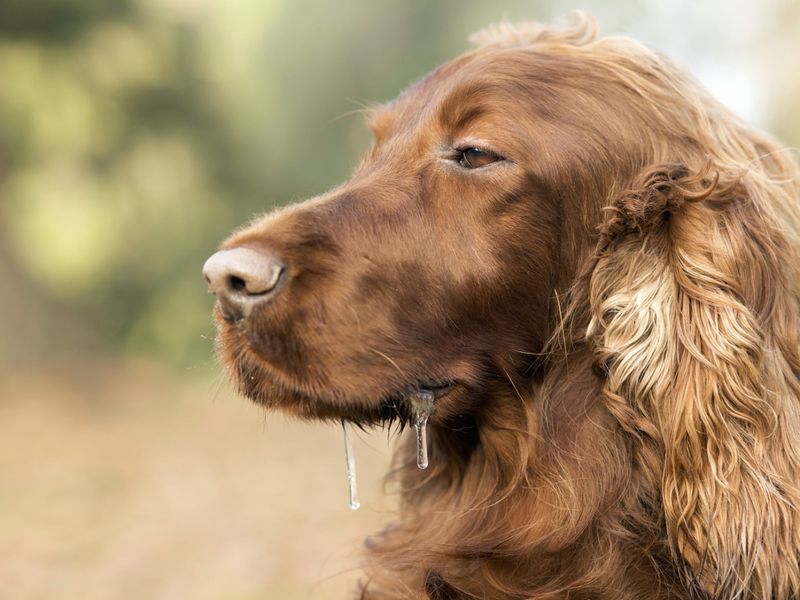
Excessive drooling can be more than just a physical reaction in dogs. It often signals stress or apprehension, especially when they sense someone is untrustworthy.
This behavior is a liquid manifestation of their anxiety, each droplet a symbol of their inner distress. It’s a silent plea for understanding.
Amidst playful surroundings, the drooling becomes an unusual clue, pointing to the dog’s unease and their perception of the people around them.
Whining Softly

A soft whine is a dog’s way of voicing their discomfort, especially when they sense something’s amiss. It’s a gentle call for attention, a sound filled with emotion.
This behavior reveals their inner conflict, a melodic expression of their doubts. The whine is a bridge between thought and sound.
In serene surroundings, this subtle sound carries weight, highlighting the dog’s perception of unease and their emotional response to those they don’t trust.
Stiff Body Language
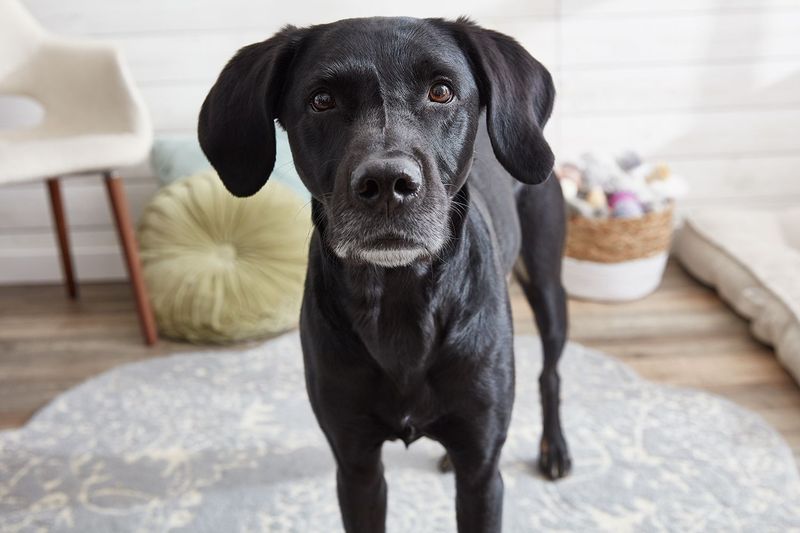
A dog’s body can become a rigid canvas, reflecting their inner alertness and caution. This stiff posture is a direct response to sensing untrustworthiness.
It’s a silent warning, an unspoken statement of vigilance. Each muscle tensed, ready to react.
In the presence of someone they doubt, this behavior becomes a visual testament to their awareness, a living sculpture of instinct and perception.
Sniffing Intensely
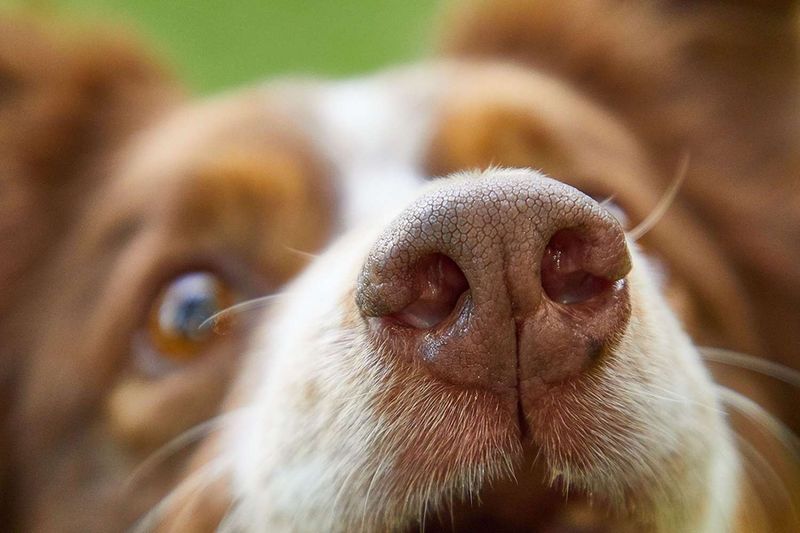
A dog’s nose is a powerful tool, and intense sniffing can indicate suspicion. When they sense something isn’t right, their nose dives deep into investigation mode.
This behavior is akin to reading a book of scents, each sniff unraveling a mystery. It’s their way of gathering information, a tactile exploration.
In crowded settings, this action becomes a clear indicator of the dog’s quest for understanding, a sensory search into the unknown.

